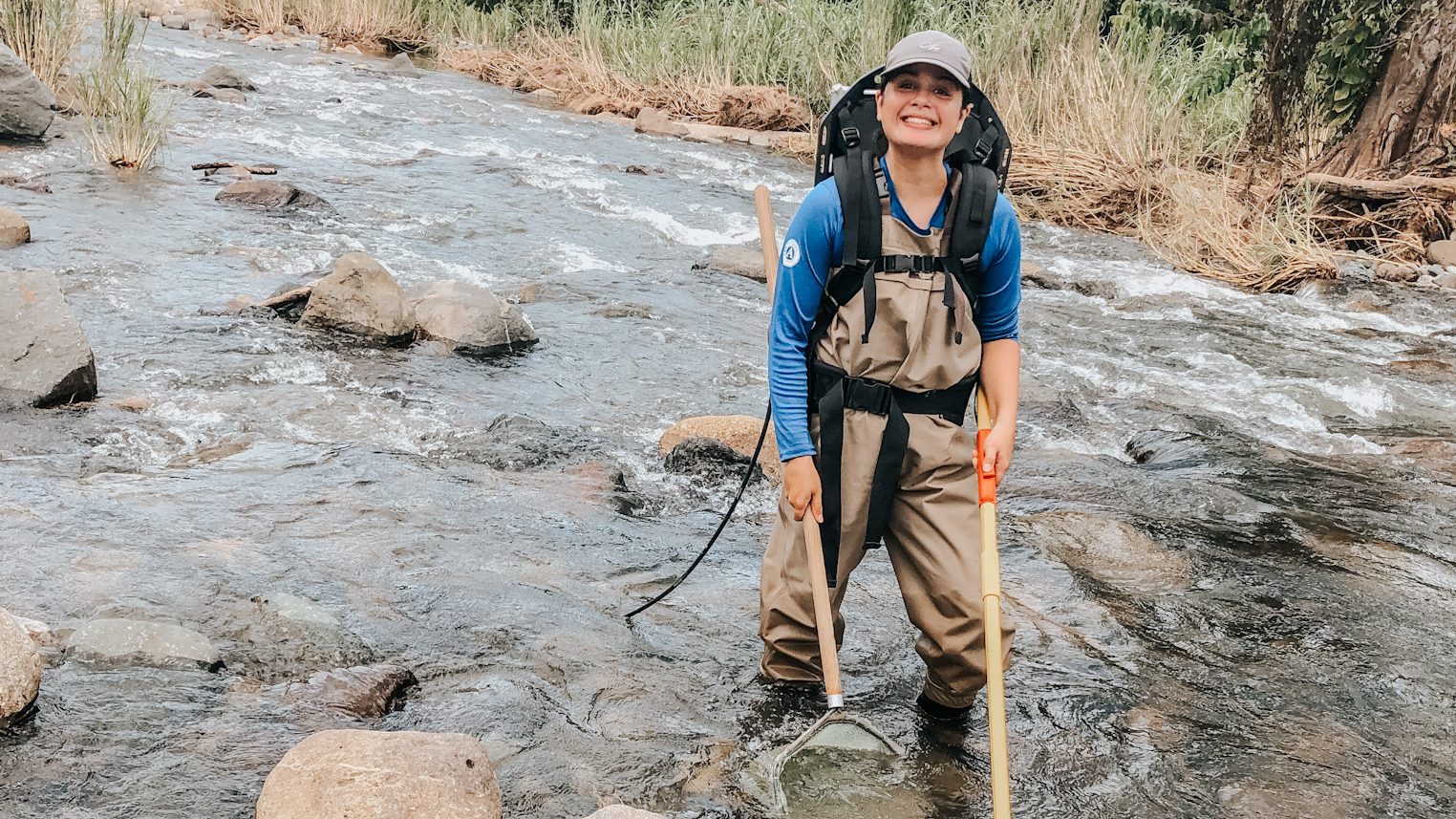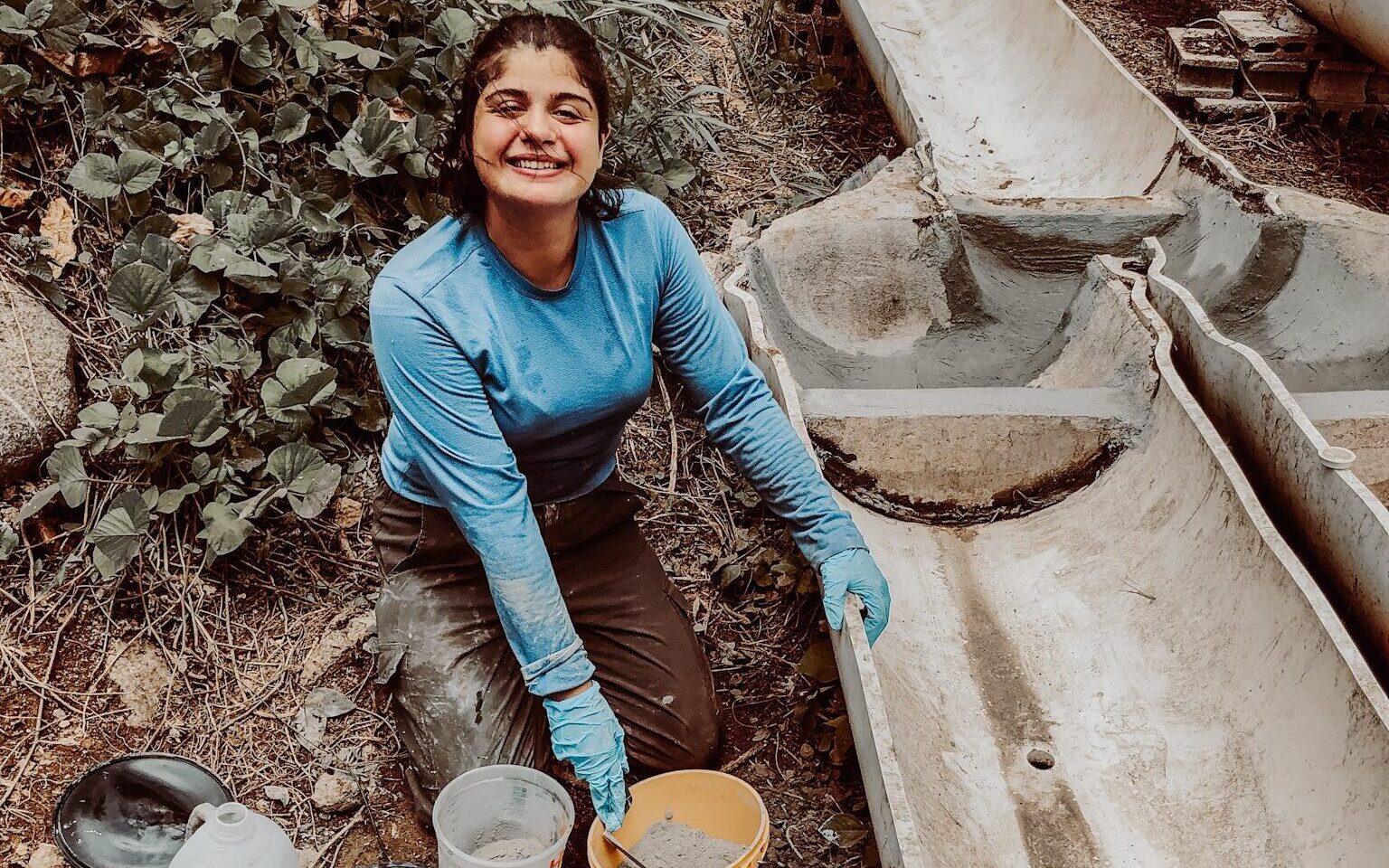Researcher Spotlight – Ámbar Torres Molinari

2020-21 Global Change Fellow
Masters Student, Department of Applied Ecology
Advisor: Dr. Thomas Kwak
Every year the Southeast Climate Adaptation Science Center funds a multi-disciplinary cohort of Global Change Fellows representing colleges across NC State University. Here are some highlights about 2020-21 Fellow, Ámbar Torres Molinari, and the applied research she’s conducting.
About You
What do you study?
I study fisheries ecology and conservation. My current research focuses on population dynamics of the American Eel from upstream to downstream environments in the streams of Puerto Rico. As a part of this research, I will also address the impacts of projected rising temperatures on the swimming performance of yellow eel.
What (or who) influenced you to go into this field of study?
During my undergraduate years, I worked at the Tropical Limnology Lab of the University of Puerto Rico, Río Piedras Campus. During my time working at the lab, my advisors, Dr. Jorge Ortíz-Zayas and Dr. Omar Pérez-Reyes, encouraged me to conduct an undergraduate research thesis with the Sirajo Goby, commonly known as cetí in its post-larvae stage. I soon realized that working with migratory and imperiled fish to inform management and conservation decisions was one of my major passions. Through volunteer work and fisheries field technician positions in Puerto Rico, I met Dr. Augustin Engman, Dr. Thomas Kwak (my current advisor), and Bonnie Myers (PhD candidate), three excellent researchers/mentors who would play a very important role in my decision to pursue fisheries conservation.
About Your Research

How can your research be used to inform management decisions?
The American Eel is an imperiled species in Canada and North America where recruitment abundance has decreased significantly in recent years. All American Eel from Canada to South America spawn within the same population in an unknown location in the Atlantic Ocean. The mystery of the American Eel’s ocean phase makes it somewhat challenging for agencies to accurately manage and conserve this species. In addition to this, more information about American Eel subpopulations in the Gulf of Mexico, the Caribbean, and South America are needed in order to determine their current status. My research will provide information about American Eel populations and novel data about the effects of climate change on this species in Puerto Rico, a tropical island located in the Caribbean. This will help provide important information to managers in order to address the status of the American Eel, and determine any conservation or management strategies needed.
How would you describe your research to a 10th grader?
I am doing a project about a fish that looks like a snake, called the American Eel. It is different from the Eels you hear about most of the time, those that live in the ocean and can sometimes sting you. American Eels are incredible travelers; all of them hatch in a mysterious and unknown location within the Sargasso Sea in the Atlantic Ocean. After they are born, some baby American Eels decide to swim to Canada and North America, while others swim to the Gulf of Mexico, the Caribbean, and even South America. Once they arrive, they enter our rivers to live there for their whole life until they are adults and can swim back to the Sargasso Sea to find a partner.
I think the American Eel is one of the coolest fishes in our rivers, because as they arrive into the estuaries and start swimming up the rivers, they are not a boy or a girl yet, they don’t have a gender! After choosing the home where they will live, we think they decide to be either a boy or a girl depending on how many eels are around them, if they like their surroundings, and how far they swam up the river.
I will study what makes the American Eel turn into female or a male, and how this can change as they live farther and farther from the mouth of the river. I will also use a small tunnel machine that we fill with water and place American Eels in. We watch how and for how long they can swim before getting extremely tired. We do this while we raise the temperature of the water, so we can imitate what we think the temperatures might be because of climate change. This way we learn how climate change can affect the American Eel’s swimming and energy.
About Your Global Change Fellow Experience
How do you expect the SE CASC Global Change Fellows Program to impact you and your work?
In my short time being a Global Change Fellow, I have been impacted in many ways. Through our seminars, we have the opportunity of meeting a multidisciplinary array of professionals from different agencies, organizations, communities, and universities. Learning about a diverse range of indispensable topics that you never knew could be so important for addressing global change has opened my mind to a wide range of possibilities and perspectives within my research, career, and personal life.
I expect we will continue to enrich our knowledge and build connections with different leaders from diverse backgrounds and communities. I also look forward to continuing to gain useful tools that we can apply in our objectives and methods in order to contribute through our climate-related research to a wide range of stakeholders and communities.
What has been the most rewarding part or your favorite part of being a SE CASC Global Change Fellow?
The most rewarding part of the SE CASC Global Change Fellows program has been planning the seminars led by the Global Change Fellows. I have been able to work with other Fellows to coordinate and lead important seminars addressing COVID-19 from a Climate perspective, and above all being able to be part of a great and diverse cohort of graduate students.
